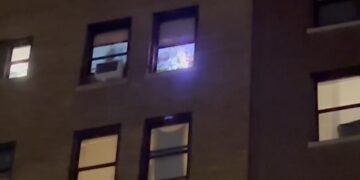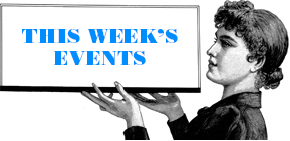/cdn.vox-cdn.com/uploads/chorus_asset/file/19996123/250b760f93f1cee93c3e246263cbe77acbb7.jpg)
By Rachel Holliday Smith, The City
This article was originally published on by THE CITY. Sign up here to get the latest stories from THE CITY delivered to you each morning.
THE CITY first published this story in January 2022, but the information and dates have since been updated for the 2023 community board application season.
Community boards in New York City weigh in on liquor licenses, budget items and local development rules. Chances are, they’ve hosted a heated debate in your neighborhood over future housing, or roadway changes.
But what is a community board, really? And how do its members get a say in all those hyperlocal issues, from street cleaning to rezonings?
Now’s the time to learn — because boards across the boroughs are choosing new members very soon.
For those curious about what boards do and how to get involved, listen up: Most of the five borough presidents are taking applications between January and March.
Here’s what to know about the process, and what to expect if you’re chosen to join:
How do you join a community board?
First step is: apply!
Applications have opened in four of the five boroughs for 2023 so far. Here are the links and deadlines:
There are 59 boards total, each corresponding with a community district, groupings of neighborhoods that can include up to 250,000 people.
Each board has up to 50 members, all volunteers, and have no minimum number of members. Board members serve via staggered two-year terms, which means half must be reappointed or replaced every year.
All of those people are appointed by their own borough president. City Council members can recommend new applicants, but the final call rests with the BP.
/cdn.vox-cdn.com/uploads/chorus_asset/file/23159506/brooklyn_cb_1_1.jpg)
Don’t worry too much if you don’t have political connections, suggested Matthew Washington, a former deputy borough president in Manhattan and chair of East Harlem’s community board. Plenty of people applied cold to join Manhattan’s boards and got on without special access or expertise, he assured.
“You just need people who are actually going to care about the issues that are relevant and important to the community,” he said.
That’s not to say politics are always completely absent from the process. For instance, members of Community Board 4 in The Bronx alleged in 2006 they were booted from the board by then-BP Adolfo Carrión after voting against plans for the new Yankee Stadium, The New York Times reported at the time.
Each BP has a different process for going through applications, which can include a written application and interviews. But, by the numbers, the chances are pretty decent that you’ll land a spot.
After the 2016 election, a record number of people applied for boards, putting the chance of getting on at 1 in 3 in Manhattan that year. But normally, Washington said the odds are better.
Typically, the Manhattan BP’s office would get about 600 applications a year to fill about 300 seats that come open annually. Applications are uneven, however, and some neighborhoods get 150 applications, while others get a few dozen, he said.
Who can (and should) join a community board?
There are no prerequisites to join a board, except that you must live or work in the district where you’d like to serve. Any city resident 16 or older can join.
Some boards have struggled to recruit members who accurately reflect the communities they serve, however.
Many community boards are notably whiter, more male and older than the neighborhoods they represent, a 2020 analysis by THE CITY found using voter-mandated demographic reports on membership.
Board veterans say public school parents, renters (as opposed to homeowners) and young people can be hard to recruit. Pedestrian and transit advocates have pushed to get more New Yorkers without cars on boards. Washington also said boards often lack enough input from public housing residents.
/cdn.vox-cdn.com/uploads/chorus_asset/file/23159483/queens_cb_2.jpg)
In his 22 years serving on East Midtown’s board, Claude Winfield said he’s been “virtually the Black person that’s been on the community board that whole time period.” Other Black members have joined, but leave within a term or two, he said.
“There must be someone else, in this whole community from 14th Street to 59th Street, that qualifies to be eligible,” he said. “They have, but they haven’t stayed.”
Some borough presidents are specifically pushing for more diversity on the boards they oversee.
In Queens, Borough President Donovan Richards noted in his 2021 demographic report that, of his 110 appointments to boards in that year, 62% were women, 74% were under 45 years old and nearly 25% identified as Black. The same percentage identified as Latinx or Hispanic.
“Much work remains toward ensuring that community boards reflect the communities they represent, but this year’s class of new appointees is a significant step in the right direction,” he said in the report.
OK, I want to join. Any advice?
Here’s what the experts say:
What exactly does a community board do?
A community board is “the entry level” to local government “where your local-level issues should be brought and dealt with in an advisory nature,” according to Winfield.
From the board’s membership, elected officers are chosen to lead the group each year. Boards also have a small paid staff, including a district manager and one or two other staffers who operate the office, set up meetings, communicate with members and keep records.
Each board holds monthly meetings of the full group, plus monthly committee meetings on subjects like health, education, land use and public safety.
All meetings are open to the public, though pandemic-era rules to allow remote or virtual gathering have affected transparency and access, THE CITY reported in 2021.
The city charter mandates board’s members must consider and then vote to approve or disapprove neighborhood issues, including: new bike lanes, liquor license applications for local restaurants, development projects that are subject to the city’s land use approval process and yearly budget requests for the area.
Their decisions are passed along to agencies, elected leaders and the public as a recommendation.
If boards are advisory only, what real power do they have?
It depends on the issue — and who you ask.
But it’s true that a board’s vote serves only as guidance, and can be ignored.
For example, in 2015, nearly every community board in the city voted against Mayor Bill de Blasio’s citywide land use changes that aimed to spur more development of affordable housing. But his administration moved forward with both of those proposals, regardless.
Often, however, city leaders and local agencies take the consideration of boards quite seriously.
A board’s disapproval of a new development project can doom it in a subsequent Council vote. And the State Liquor Authority hardly ever goes against a board’s approval of a liquor license, SLA committee members have told THE CITY. The Department of Transportation has been so swayed by boards on bike lanes, cycling advocates have pushed to repeal a law requiring they weigh in on biking infrastructure.
Beyond its charter-mandated duties, boards also hold a lot of informal power. To Winfield, it’s all about using institutional knowledge to escalate issues to the right agency or elected officials when someone has a problem in the neighborhood.
/cdn.vox-cdn.com/uploads/chorus_asset/file/23115300/121621_bronx_community_board_10.jpg)
In his years on the board, he’s gotten new trees planted, curb cuts put into sidewalks and old abandoned newspaper bins cleaned up.
“If you have a complaint, call 311, get a number and bring it to the community board. We can access the agencies, and the people that we know, to get that complaint operated on,” he said.
For Washington, being on the board meant learning about issues — and advocating for solutions — on things he never would have known about before.
A particularly stark example came in 2009 when Costco needed board approval for late-night deliveries at their then-new East Harlem store. That negotiation led to Washington and others learning that Costco did not accept food stamps. Locals pushed back, and the company relented. Food stamps are now accepted at all Costco stores.
“It’s pretty exciting,” Washington said. “Now everyone across the country who goes to Costco with food stamps can pay for their groceries, and it started in East Harlem with Community Board 11.”
Board members also gain power simply because they become more powerful down the road.
Many people looking to work in government or run for office in New York get their experience at a community board first. The proof is in the pudding: City Council Speaker Adrienne Adams, former Lieutenant Governor Brian Benjamin, and former Speaker Corey Johnson all served as chairs of boards, in southeast Queens, Harlem and Chelsea, respectively.
“You learn a lot about the city government structure,” said Winfield. “It’s a learning place.”
THE CITY is an independent, nonprofit news outlet dedicated to hard-hitting reporting that serves the people of New York.









Where are the links to apply?
https://form.jotform.com/223404628070146
Boards don’t choose their members! They are appointed.
In my opinion CB members should have a basic knowledge of the various city departments and agencies as well as the law.
The City has stripped CB of their power to influence decisions that would impact their communities. The City has continuously constricted the ability of the public to have any effective say on public policy.
If your a Republican you have no chance to be appointed
I have applied twice and been rejected.
Wonder if it is because I am Republican?
Very disappointed.